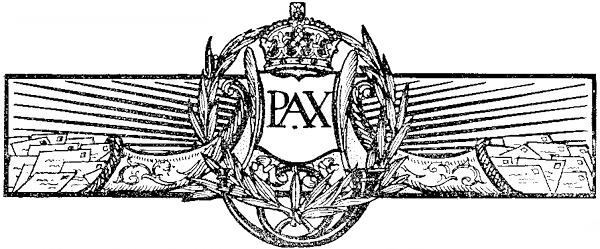Roman Provincias > Provincia Germania Inferior
Provincia Germania Inferior

Background
Provincia Germania Inferior, or Lower Germany, was a Roman province situated in the northwestern part of the Roman Empire, corresponding roughly to modern-day Netherlands and western Germany. Here's an overview of the province:
Conquest and Formation:
Germania Inferior was established as a Roman province during the reign of Emperor Augustus in the early 1st century CE. It was created as part of the Roman efforts to consolidate control over the territories west of the Rhine River. The region had been gradually brought under Roman influence through military campaigns and diplomacy, with various Germanic tribes either submitting to Roman authority or being defeated in battle.
Geography:
Germania Inferior was bordered by the Rhine River to the east, the North Sea to the north, and the provinces of Germania Superior and Belgica to the south. It encompassed a predominantly low-lying and marshy terrain, with fertile river valleys and coastal plains. The province's strategic location along the Rhine River and its proximity to the North Sea facilitated trade and communication with other parts of the Roman Empire.
Urban Centers and Infrastructure:
Colonia Claudia Ara Agrippinensium, modern-day Cologne, served as the capital and largest city of Germania Inferior. It was an important commercial, military, and administrative center, boasting Roman monuments such as temples, forums, and theaters. Other significant cities in the province included Noviomagus (modern-day Nijmegen), Traiectum ad Rhenum (modern-day Utrecht), and Batavodurum (modern-day Nijmegen). These cities were connected by a network of roads, bridges, and canals constructed by the Romans to facilitate transportation and trade.
Economy and Resources:
Germania Inferior was an economically prosperous region, known for its agriculture, trade, and manufacturing. The province produced a variety of crops, including grains, fruits, vegetables, and livestock, which were cultivated in the fertile river valleys and coastal plains. Trade along the Rhine River and with neighboring provinces contributed to the province's wealth. Germania Inferior also had significant mineral resources, including coal, iron, and salt, which were mined and exploited for export to other parts of the Roman Empire.
Culture and Society:
The population of Germania Inferior was ethnically diverse, consisting of Roman settlers, indigenous Germanic tribes, and other ethnic groups. Latin was the administrative language of the province, although indigenous languages may have also been spoken. Romanization had a significant impact on the culture and society of Germania Inferior, with Roman customs, laws, and institutions gradually replacing indigenous traditions. Roman religious beliefs and practices coexisted with local cults and deities, and temples dedicated to Roman gods and goddesses were erected throughout the province.
Legacy and Decline:
Germania Inferior remained under Roman rule until the decline of the Western Roman Empire in the 5th century CE. Following the Roman period, the region was ruled by various powers, including the Franks, the Holy Roman Empire, and later medieval and modern Germany and the Netherlands. The legacy of Roman Germania Inferior endures in its archaeological sites, monuments, and cultural heritage, which provide valuable insights into the history of the region and its interactions with the broader Roman Empire.
Roman Provincias
Roman Provincias List
- Provincia Achaea
- Provincia Aegypti
- Provincia Africa Proconsularis
- Provincia Cottiae
- Provincia Maritimae
- Provincia Alpes Poeninae
- Provincia Arabia Petraea
- Provincia Armenia
- Provincia Asia
- Provincia Assyria
- Provincia Augustamnica
- Provincia Bithynia et Pontus
- Provincia Britannia Inferior
- Provincia Britannia Superior
- Provincia Britannia
- Provincia Byzacena
- Provincia Cappadocia
- Provincia Cilicia
- Provincia Corsica et Sardinia
- Provincia Crete et Cyrenaica
- Provincia Cyprus
- Provincia Dacia Aureliana
- Provincia Dacia
- Provincia Dalmatia
- Provincia Galatia
- Provincia Gallia Aquitania
- Provincia Gallia Belgica
- Provincia Gallia Lugdunensis
- Provincia Gallia Narbonensis
- Provincia Germania
- Provincia Germania Inferior
- Provincia Germania Superior
- Provincia Hispania
- Provincia Hispania Baetica
- Provincia Hispania Citerior
- Provincia Hispania Lusitania
- Provincia Hispania Tarraconensis
- Provincia Hispania Ulterior
- Provincia Iudaea
- Provincia Lycia et Pamphylia
- Provincia Macedoniae
- Provincia Mauretania
- Provincia Mauretania Caesariensis
- Provincia Mauretania Tingitana
- Provincia Mesopotamia
- Provincia Moesia
- Provincia Moesia Inferior
- Provincia Moesia Superior
- Provincia Pannonia
- Provincia Pannonia Inferior
- Provincia Pannonia Superior
- Provincia Pannonia Valeria
- Provincia Raetia
- Provincia Sicilia
- Provincia Sophene
- Provincia Syria
- Provincia Syria Palaestina
- Provincia Syria Phoenice
- Provincia Thracia